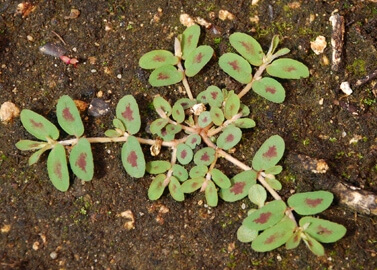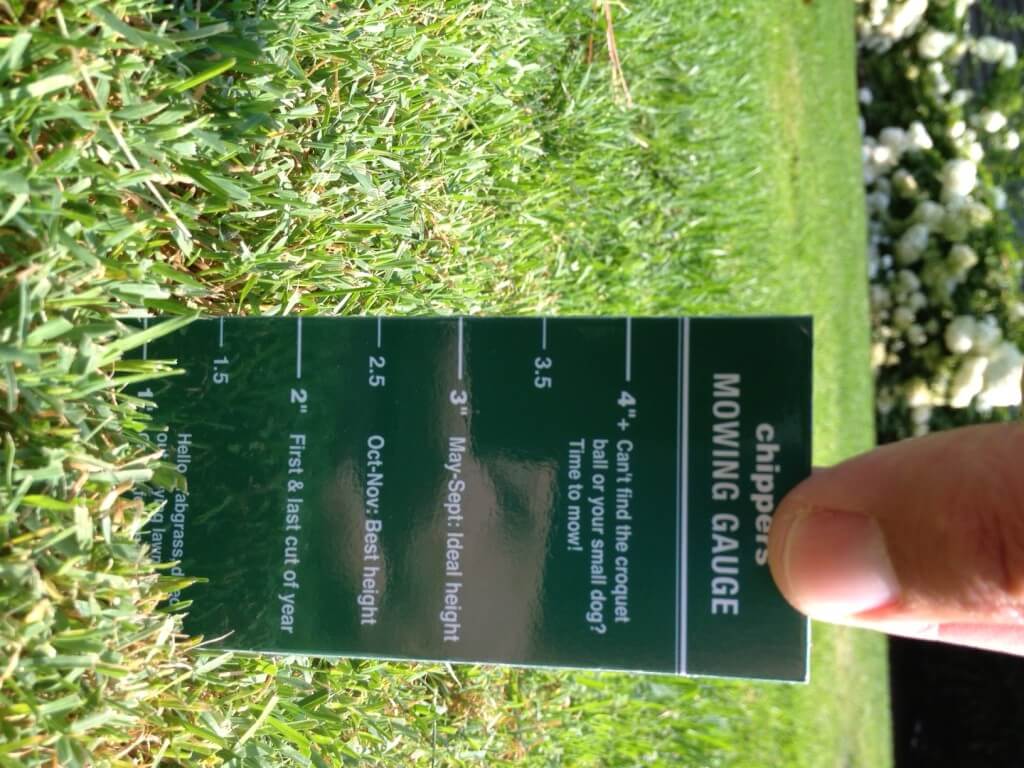Dramatic weather fluctuations in temperature and humidity cause real problems to your summer lawn. Daily temperatures in the upper 80’s or low 90’s directly contribute to our cool-season grasses shutting down to protect themselves resulting in brown or tan patches in your lawn. High heat also contributes to fast drying of the soil which speeds up the browning in a normally green lawn.
Lawns really prefer temperatures in the 70’s, so grass browning is a normal part of summer. Even with adequate soil moisture, high heat slows lawn growth and the typical lush lawn you had in the spring fades to lighter shades of green. July and August can be brutal on lawns, especially if you are mowing too short and have not been diligent in preparing your lawn in the spring and even the previous fall for summer weather.
Thin lawns or those predisposed to quick drying, perhaps with a higher sand content or southern exposure means the soil will become very hot, leading to crabgrass germination and annual weeds like spotted spurge, oxalis, black medic, and purslane. These heat-loving weeds will pop up in a short time, barely noticeable until they begin filling in thin or bare areas within weeks. Spurge is particularly aggressive and will literally grow up and over your lawn like crabgrass. Crabgrass thrives in hot and dry weather, seemingly growing inches overnight under ideal summer conditions. What can be done?

Spurge is a fast growing summer annual weed.
Preventative measures are the best course of action starting off the year with a spring pre-emergent, broadleaf weed control, and high mowing, and mulched clippings to recycle valuable nutrients. However for severe weed infestations or those with a low tolerance for such invaders, summer spraying can provide some relief. There are several products available which will specifically target the crabgrass and annual weeds during July and August. A few treatments can do a nice job restoring a civilized lawn which may have become overrun by crabgrass along the driveway, walkway, or patio sections.
Areas prone to high heat such as along roads, thin areas, and pavers are particularly vulnerable to weed invasion even with a spring treatment of inhibitor simply due to the weak turf foundation and the harsh conditions of summer. Any pre-emergent product applied can only stand up so long in thin or bare areas of a lawn which is why a thick, healthy lawn is the best defense. High heat is not the only down side to summer lawn blues; high humidity can spell double trouble as diseases like summer and brown patch can really take hold and do damage in short order.
In the case of brown patch, too much water when combined with high heat can set your lawn up for damage and thinning virtually overnight. Watering in the morning is your best friend and a little less water is better than too much when it comes to irrigation systems. I’ve seen a lot of lawns killed with kindness as irrigation systems drown the grass, and although the color is better and there is less dry brown, damage from summers diseases can cause more significant turf loss.

For a free mowing magnet, just e-mail or call anytime.
On the flip side, short mowing and not enough irrigation promotes summer patch, especially in sod or bluegrass lawns. Summer patch damage becomes evident as pitting, scars, and crescent-shaped lesions due to heat, humidity, and turf under stress like drought. Short mowing further compounds the problem which means even more stress placed on your lawn resulting in permanent damage. Seeding with a disease-resistant rye grass into the patches in the fall will help ease the visual trauma.
Think of the summer as a time to get your lawn through a bad cold or flu and fall as the cure. The goal is to prevent as much damage as possible from weeds, insects, drought, and disease. Sometimes a light touch is better than spraying materials which further stunt and stress out an ecosystem already under duress. Each lawn is unique, but many underlying principles remain the same in respect to irrigation, mowing, and lawn treatments. As always, the best offense is a good defense in the spring and fall. When in doubt, seek professional advice; what you chose to do or not do this summer really can impact your lawn.
In any case, take a vacation, this is great beach weather!


